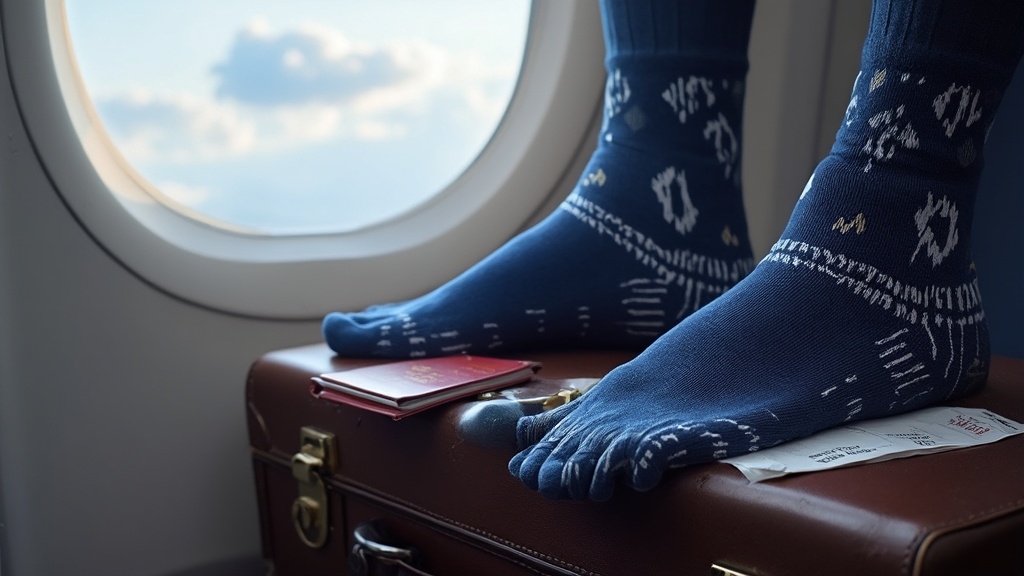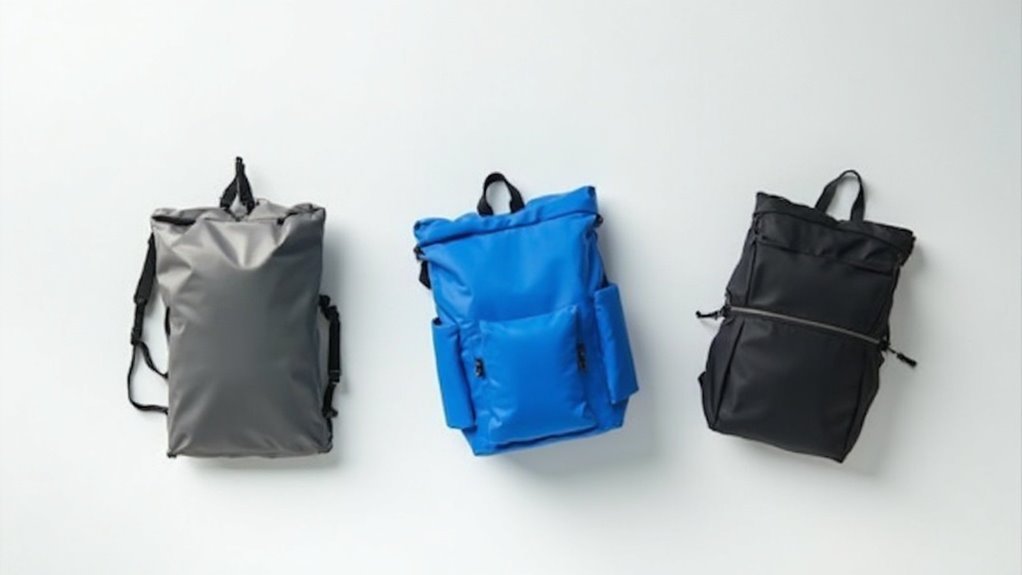Table of Contents Show
There may be products. Products are independently selected by our editors. We may earn an affiliate commission from the links with no charge to you, example: as Amazon Affiliate.
We’ve found that compression socks are essential for any traveler, especially on flights over four hours. These specialized socks use graduated compression to boost circulation, reduce swelling, and lower the risk of blood clots – particularly important when sitting for long periods. Our top picks include 2XU ($45) and Bombas ($28) for their blend of comfort and support at 15-20 mmHg. Let’s explore why these socks are transforming the way we fly and which options will work best for you.
Key Takeaways
- Compression socks reduce the risk of blood clots and DVT during flights over four hours by maintaining optimal circulation.
- Graduated compression technology provides strongest support at ankles, promoting healthy blood flow throughout long periods of sitting.
- Top-rated options like 2XU ($45) and Bombas ($28) offer comfortable 15-20 mmHg compression ideal for most travelers.
- Regular travelers report improved comfort, reduced leg fatigue, and better sleep quality during long flights with compression socks.
- Essential for travelers over 40, pregnant women, or those with circulation issues, providing preventive care against swelling.
The Science Behind Compression Socks
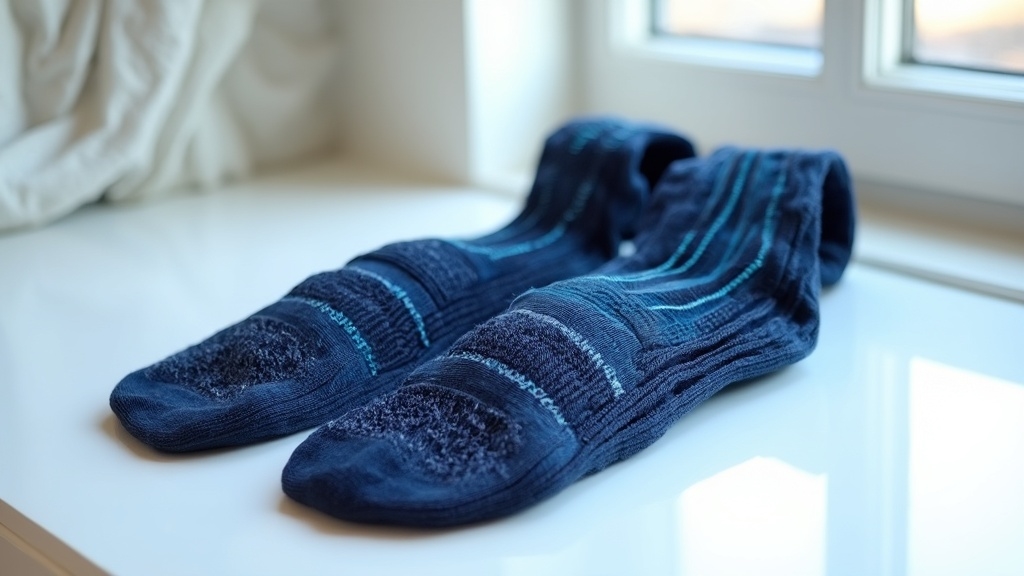
When it comes to understanding compression socks, the science is remarkably straightforward. These specialized socks work through graduated compression, applying the strongest pressure at your ankles and gradually decreasing it up your leg. This simple but effective design helps prevent blood clots by promoting better circulation and reducing blood pooling in your lower extremities. Additionally, overcoming unexpected challenges can enhance your overall travel experience, making the use of compression socks even more beneficial.
We’ve found that the compression levels are measured in mmHg, with 15-20 mmHg being ideal for most travelers. The American Society of Hematology supports their use, particularly for flights over four hours, where they’ve been shown to notably reduce DVT risk. For best results, we recommend putting them on at least two hours before your journey and wearing them throughout your travel time. Remember to pair this with regular movement and proper hydration for maximum protection, as exposure to new cultures can significantly enhance emotional resilience during long journeys.
Health Benefits During Air Travel
As frequent flyers well know, sitting for extended periods during air travel can pose serious health risks. That’s why we’re passionate about recommending compression socks for your next flight. These specialized socks effectively reduce the risk of deep vein thrombosis (DVT) and blood clots, especially during flights lasting four or more hours when the risk increases up to four times. Wearing compression socks can also help maintain optimal circulation throughout your journey, promoting better overall leg health.
We’ve found that wearing compression socks at least two hours before takeoff provides best benefits. They help stimulate circulation in your lower legs throughout your journey, reducing swelling and fatigue upon arrival. This is particularly important if you’re over 40, recently had surgery, or have other health considerations. When combined with regular movement and proper hydration, compression socks can greatly enhance your travel comfort and safety. Additionally, selecting medical-grade compression socks ensures optimal support for managing circulation concerns during long flights.
Who Really Needs Compression Socks
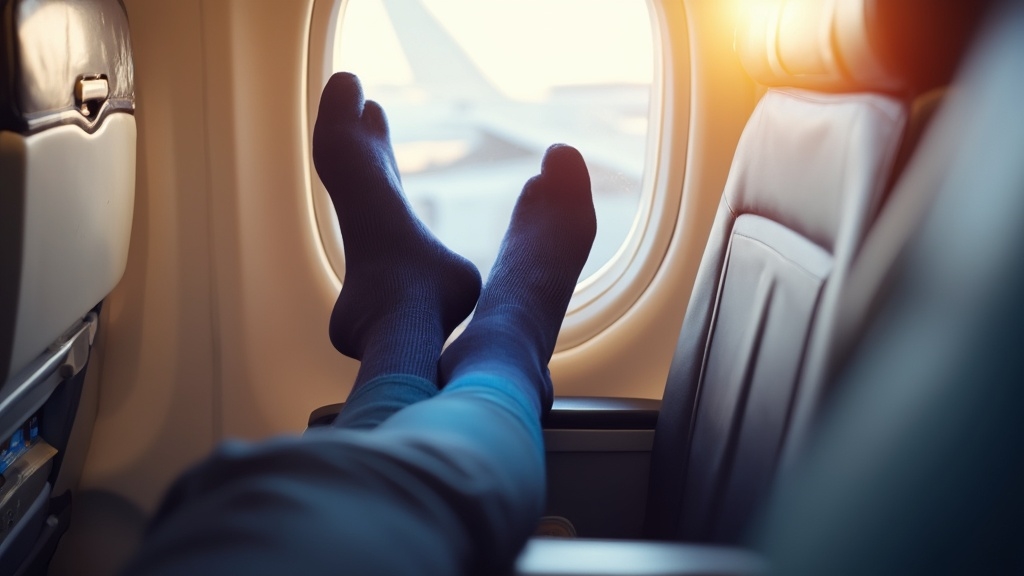
The benefits of compression socks extend beyond general travel comfort to address specific health needs. While we recommend them for all travelers on flights over an hour, certain individuals should consider them essential travel gear.
You’ll especially want to wear compression socks if you’re over 40, pregnant, or carrying extra weight, as these factors increase your risk of developing deep vein thrombosis (DVT) during travel. The risk becomes particularly significant on journeys lasting four or more hours, where the chance of blood clots rises by up to four times. Those with circulation issues, previous blood clots, or varicose veins should make compression socks a non-negotiable part of their travel kit. Engaging in travel can also encourage personal growth through traveling, which highlights the importance of taking care of your health while exploring new environments. Even if you’re healthy, wearing them can prevent the uncomfortable swelling that often accompanies long periods of sitting. Additionally, prioritizing self-care activities during your travel can enhance your overall well-being.
How to Choose the Right Compression Level
Understanding compression levels can feel overwhelming at first, but selecting the right amount of pressure is vital for both comfort and effectiveness during travel. We recommend starting with 15-20 mmHg compression levels for most travelers, as this provides mild support without being too restrictive.
If you have specific health concerns like DVT or varicose veins, we strongly encourage consulting your doctor before choosing a compression level. They’ll help determine if you need the moderate 20-30 mmHg range for additional support. Remember, the proper fit is important – your socks shouldn’t feel painfully tight or loose enough to bunch up. We suggest trying knee-high styles, which offer excellent circulation benefits without the potential issues of thigh-high options. Additionally, disconnecting from digital distractions can enhance your travel experience by promoting relaxation. When in doubt, start with medium compression and adjust based on how your legs feel during your journey. Additionally, prioritizing rest and recovery during travel is crucial for maintaining overall well-being and preventing discomfort.
Top-Rated Compression Socks for 2024
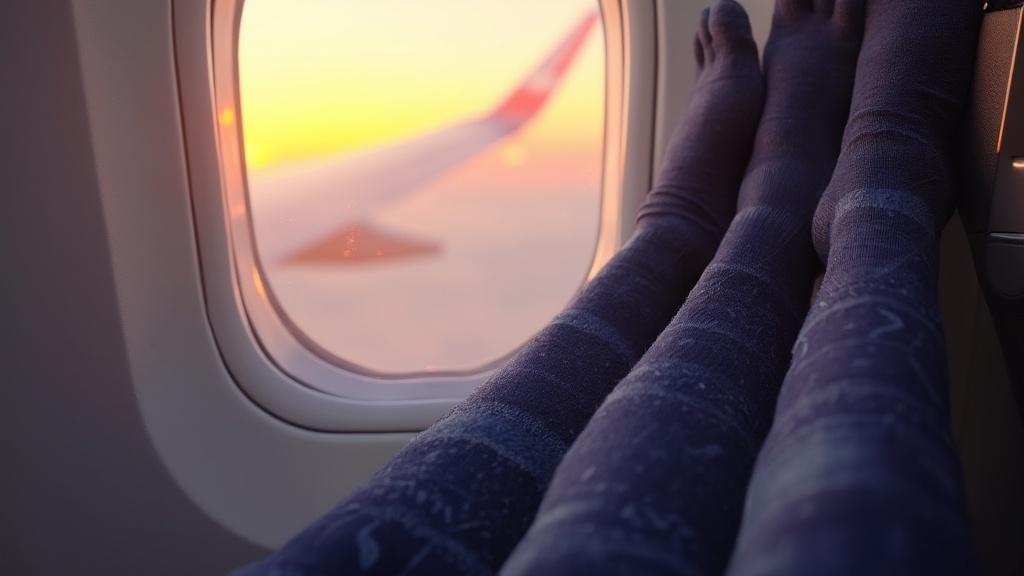
While many compression sock brands promise relief during travel, only a select few consistently deliver exceptional comfort and support. We’ve tested numerous options and identified the top performers that’ll keep you comfortable on your next journey. Additionally, incorporating practices focused on mental strength and resilience can further enhance your travel experience. Engaging in self-discovery as you travel can also boost your overall sense of well-being.
| Brand | Price | Compression Level |
|---|---|---|
| 2XU | $45 | 15-20 mm Hg |
| Bombas Everyday | $28 | 15-20 mm Hg |
| Comrad CloudCotton | $32 | 15-20 mm Hg |
| Levsox | $25/2 pairs | 20-30 mm Hg |
| Sigvaris Motion | $68 | 20-30 mm Hg |
For everyday travel comfort, we recommend the Bombas Everyday socks, which offer excellent value with reliable compression. If you need stronger support, consider the medical-grade Sigvaris Motion, perfect for active travelers. Those seeking budget-friendly options will find great value in Levsox’s two-pair package, while the 2XU and Comrad options strike an ideal balance between performance and price.
Proper Care and Maintenance Tips
Once you’ve invested in quality compression socks, proper care will prolong their lifespan and maintain their effectiveness. We recommend washing them after each wear in cold water on a gentle cycle, avoiding fabric softeners and bleach that can damage the fibers. Let them air dry or tumble dry on low heat to preserve their elasticity.
Even with proper care, compression socks need replacement every 3-6 months with regular use. Keep an eye out for signs of wear, including thinning fabric or stretched-out elastic, as these indicate it’s time for a new pair. Between uses, store your compression socks in a cool, dry place away from direct sunlight. These simple maintenance steps will guarantee you get the most out of your investment while maintaining the proper compression levels needed for effective support.
Real Traveler Success Stories
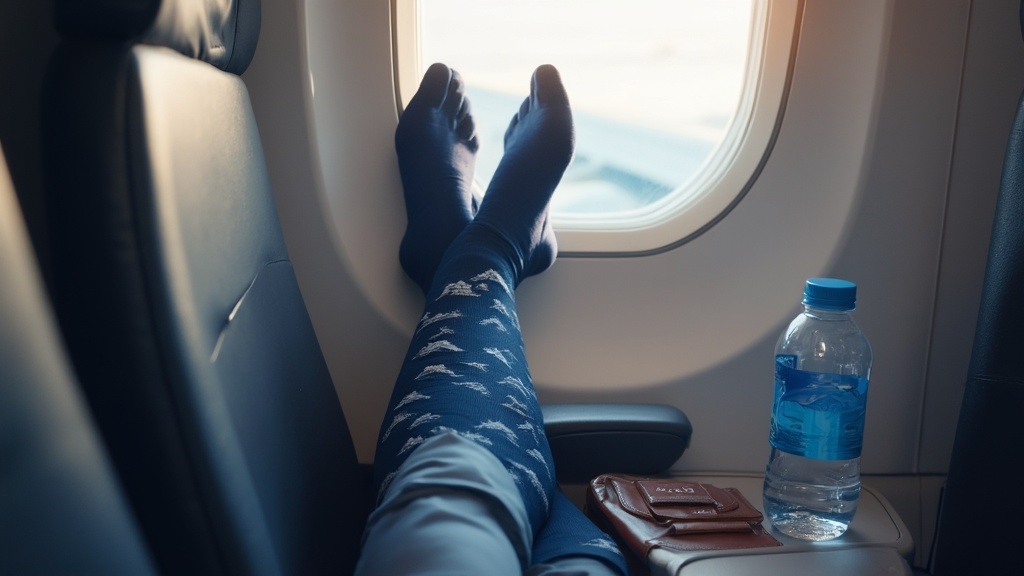
Through countless testimonials, real travelers have demonstrated the transformative impact of compression socks on their journeys. We’ve heard from passengers who’ve experienced remarkable reductions in leg swelling and fatigue during long-haul flights, making their travels considerably more comfortable.
Many travelers with restless leg syndrome report better sleep quality while wearing compression socks, while others have found relief from persistent varicose vein discomfort. What’s particularly encouraging is how these socks help improve circulation for those with pre-existing health conditions, enabling them to stay active and confident during their adventures. Even frequent flyers praise how compression socks have helped minimize their jet lag symptoms. These success stories consistently show that proper circulation support can make a substantial difference in travel comfort and safety.
Frequently Asked Questions
Why You Should Always Travel With Compression Socks?
We recommend compression socks for your travel leg health. They’ll keep vein circulation flowing during long flights, reducing swelling and DVT risk while ensuring you arrive feeling comfortable and energized.
Are Travel Socks the Same as Compression Socks?
We’ll help clarify: Travel socks and compression socks aren’t the same. While travel socks offer basic comfort benefits, true compression sock types provide measured pressure levels that support circulation during long journeys.
Is There a Downside to Wearing Compression Socks?
While we typically recommend compression socks for their health benefits, improper sock fit can cause discomfort, skin irritation, and restricted blood flow. They’re not ideal for everyone’s travel comfort needs.
What Is the Best Compression Sock Level for Travel?
Like a gentle hug for your legs, we recommend 15-20 mmHg compression socks for most travelers. They’ll provide circulation benefits while staying comfortable, but remember proper fit and breathable materials are essential.
Conclusion
We’ve seen thousands of travelers transform from miserable, swollen-ankled wanderers into happy adventurers simply by slipping on compression socks. They’re not just another travel accessory – they’re practically superhero capes for your feet! Whether you’re crossing continents or just hopping between states, we’ll never board another plane without them. Trust us, your legs will thank you a million times over for making this game-changing investment.
